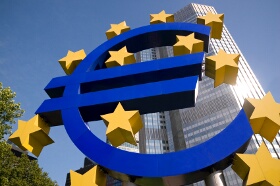
The EUR/USD currency pair consolidated its daily gains around 1.1990 after the release of positive German ZEW survey data. The German ZEW survey surprised to the upside as both economic sentiment and current conditions beat expectations.
The EUR/USD currency pair began today’s session with significant upward momentum as it rallied to levels above 1.2000. The release of the German ZEW survey allowed the currency pair to consolidate its gains around the 1.1990 level.
The release of the positive German ZEW survey data allowed the EUR/USD pair to consolidate gains made in the Asian session. The economic sentiment index came in at 17.0 versus the expected 12.0 figure. The current conditions ZEW index also beat expectations by coming in at 87.9 as compared to the expected 86.3. The Eurozone ZEW economic sentiment survey disappointed as it was recorded at 31.7 which was lower than the market forecast of 32.4. The Eurozone construction output for July, released by Eurostat earlier today, recorded 0.2% growth, which was the same rate recorded in June.
Earlier in the session, the release of the Eurozone current account surplus for July released by the European Central Bank, which beat expectations by coming in at â¬25.1 billion, boosted the currency pair. The weaker US dollar, as tracked by the US Dollar Index, which hit a daily low of 91.77 also contributed to the euro’s strong performance.
The currency pair’s future performance is likely to be affected by the release of US housing starts and building permits data, scheduled for later today.
The EUR/USD currency pair was trading at 1.1969 as at 11:44 GMT having dropped from a high of 1.2006. The EUR/JPY currency pair was trading at 133.43 having declined from a high of 134.16.
If you have any questions, comments or opinions regarding the Euro,
feel free to post them using the commentary form below.